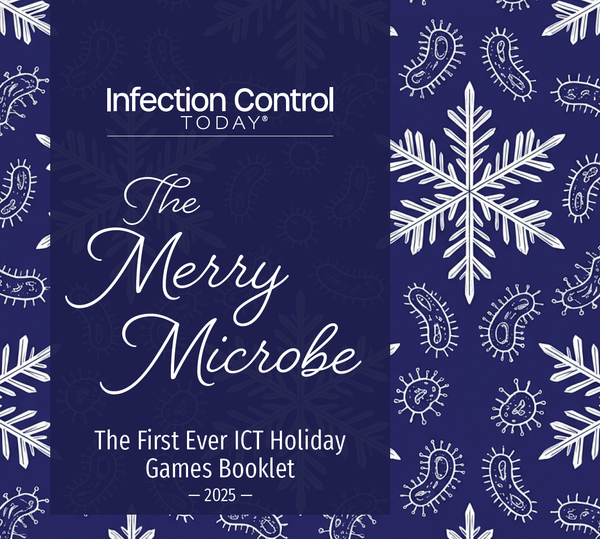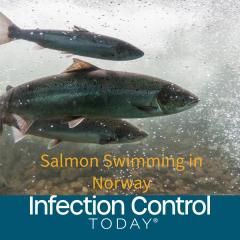Featured Columns
Latest News
Shorts










Podcasts
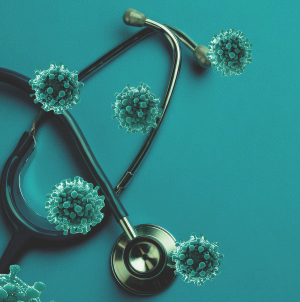
Building a Culture of Safety: Experts Call for a Reboot on Stethoscope Hygiene and Everyday Infection Risks
Missed opportunities, Graves warned, place patients at risk. Many surgical patients are immunocompromised, and a stethoscope may come near the incision. “Regardless of the scenario, [cleaning the stethoscope] each time is going to protect patients.”

Stethoscope Hygiene, UV Technology, and the Realities of Muscle Memory: Experts Debate Practical Infection Prevention
Stethoscope hygiene, UV technology, and dwell time failures took center stage in this second installment of a panel of experts explored why routine disinfection still lags and what must change in clinical practice.

NDM-CRE Surge Demands Stronger Infection Prevention and Testing Strategies, Study's Author Says
This is the second of a 2-part conversation with CDC epidemiologist Danielle Rankin, PhD, MPH, CIC. In this installment, she dives into practical infection prevention strategies, surveillance challenges, and the urgent need for mechanism-specific testing as NDM-CRE surges in US health care settings.

Rising Threat of NDM-CRE: CDC Epidemiologist Highlights Urgent Infection Prevention Priorities
This is the first of a 2-part conversation with CDC epidemiologist Danielle Rankin, PhD, MPH, CIC. In this installment, she unpacks her study about the urgent rise of NDM-CRE and what infection preventionists need to know now.

Fuel Immunity First: How to Use Nutrition to Stay Ahead of Infection
Infection prevention starts long before exposure; it begins with what we put into our bodies. This article series explores how key vitamins and nutrients like D, C, zinc, and more can strengthen immune defenses, reduce respiratory illness severity, and empower infection preventionists with evidence-based strategies to support overall health from the inside out.
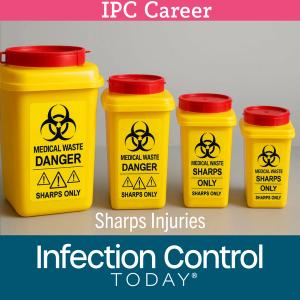
Sharps Safety Starts with Us: Why Infection Preventionists Must Lead the Charge
Sharps injuries remain a silent but serious threat in health care that infection preventionists are uniquely equipped to confront. With underreporting widespread and safety devices underused, it’s time for IPs to step into a leadership role, using their expertise in systems thinking, education, and policy to build a culture where staff protection is as prioritized as patient care.

Building a Culture of Sharps Safety Requires More Than Just Tools
Sharps safety isn’t just an operating room issue—it’s a system-wide concern that demands stronger policies, consistent reporting, and cross-departmental collaboration to truly protect health care workers.

Breaking the Cycle of Silence: Why Sharps Injuries Go Unreported and What Can Be Done
Despite decades of progress in health care safety, a quiet but dangerous culture still lingers: many health care workers remain afraid to report sharps injuries, fearing blame more than the wound itself.
Videos
Continuing Medical Education
All News

Announcing the winner of the 2025 Infection Control Today Educator of the Year Award: Patricia Montgomery, MPH, RN, CIC, FAPIC.
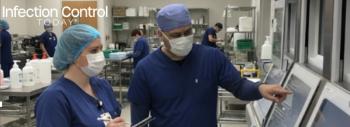
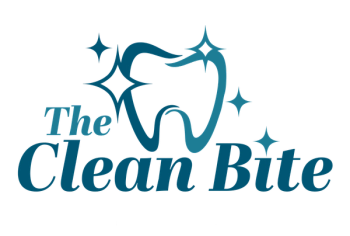
When infection control slips, the consequences can be serious: patient harm, staff illness, fines from OSHA/local inspectors, and damage to your reputation. That’s why training isn’t optional; it’s essential.

Long-term wastewater surveillance revealed hidden SARS-CoV-2 transmission, detected variants early, and supported new EU public health mandates, demonstrating wastewater-based epidemiology as a critical early-warning tool for infection prevention, environmental hygiene, and outbreak preparedness.

Copper-infused textiles are gaining traction as hospitals confront rising antimicrobial resistance and financial pressure. In this installment of ICT linen roundtable, experts explained how passive antimicrobial fabrics can reduce infection risk, shorten length of stay, protect revenue, and strengthen operational resilience, all while working quietly in the background.
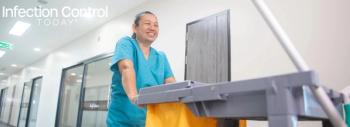
Hospitals often champion high-reliability principles, yet overlook one of their most risk-sensitive disciplines: environmental services. EVS operates in clinical environments where a single missed step can trigger pathogen transmission, regulatory failure, or patient harm. True high reliability is impossible without recognizing EVS as a core contamination-control and patient-safety function.


Think you know your EVS science inside and out? This crossword puts your expertise to the test with clues drawn from disinfection practices, cleaning validation, and the terminology every EVS professional and infection preventionist should know. Grab a pen or a colleague and see how far your knowledge takes you.
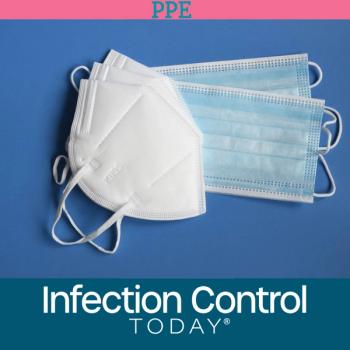

As hospitals seek stronger defenses against health care-associated infections, experts are turning their attention to an unexpected source: copper-infused linens. Learn how, supported by emerging science and real-world feasibility, these textiles may offer a practical and effective way to lower microbial loads and enhance infection prevention bundles in this installment of a recent roundtable on linen issues.

Infection preventionists face a daily battle against unseen threats, yet the hardest struggle is often the fear of speaking up. When you spot a dangerous gap in practice, do you act or stay silent to avoid conflict. Real safety begins when IPs are empowered to stop the line without fear or hesitation.
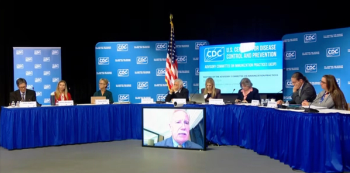
The Advisory Committee on Immunization Practices (ACIP) has revised its long-standing recommendation for universal infant hepatitis B vaccination, shifting to an individualized, parent–provider decision-making model for babies born to hepatitis B–negative mothers. The change sparked intense debate among committee members.

HSPA President Arlene Bush believes the sterile processing profession is stronger—and more essential—than ever. From expanding public awareness to evolving standards and global reach, Bush says the field is driven by dedicated professionals who “do amazing things, 365 days a year,” and deserve recognition for their expertise, resilience, and impact on patient safety.

Infection prevention has outgrown the idea that only bedside nurses belong in the role. Today’s IP work is epidemiology, data science, quality, and systems leadership—yet non-RN experts are still told they “don’t belong.” It is time to broaden the pipeline and value competence over a single professional credential and experience.

A large population study of more than 1,100 adults suggests there are really 2 biologically meaningful nasal states: noses dominated by Staphylococcus aureus and noses ruled by protective commensals like Corynebacterium and Dolosigranulum. Intermittent carriers fall in between, prompting researchers to rethink long-standing categories of S aureus colonisation and risk.

As hospitals search for new ways to reduce environmental bioburden, copper-embedded textiles are emerging as a promising tool. In this second installment of ICT's recent panel discussion, experts described how these soft, everyday fabrics can rapidly kill microbes, sustain their effectiveness between washes, and strengthen infection control bundles across care settings.

As financial pressures mount across U.S. health care, infection preventionists are increasingly caught in the crossfire of hiring freezes and sudden layoffs. The profession’s resilience is being tested, and for Saba Shaikh, MPH, an unexpected dismissal became both a stark wake-up call and the start of a healthier, more empowering new chapter.
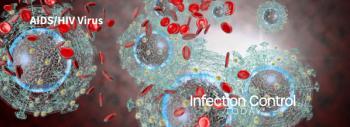
Despite decades of progress transforming HIV from a fatal diagnosis into a manageable chronic condition, today’s antiretroviral therapies still face a stubborn barrier: They work brilliantly in theory but fall short when access, adherence, and real-world challenges get in the way. As long-acting injectables emerge and curative research accelerates, developers are being pushed to design interventions that perform not just in controlled trials, but in the complex realities of the communities most affected by HIV.
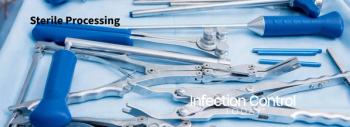
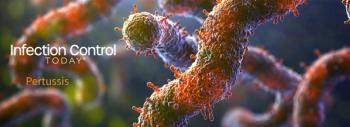
Whooping cough is surging across West Virginia just as vaccine misinformation and new exemption policies erode one of the state’s most reliable defenses against the disease, leaving infants and other high-risk residents increasingly vulnerable.

From hospital beds to privacy curtains, textiles may be one of the most underestimated contributors to health care-associated infections, according to experts who say these everyday items deserve far more attention in prevention bundles.

Hand, foot, and mouth disease is spiking across parts of the US, with some states reporting record numbers of outbreaks. Experts say environmental conditions, shifting immunity, and new viral strains may be driving this year’s rapid rise.

Thank you, IPC professionals, from Infection Control Today!

Missed opportunities, Graves warned, place patients at risk. Many surgical patients are immunocompromised, and a stethoscope may come near the incision. “Regardless of the scenario, [cleaning the stethoscope] each time is going to protect patients.”

“We believe it is essential to reaffirm what decades of rigorous research have already demonstrated. Vaccines do not cause autism," a statement from SIDP, APIC, and HOPA stated, released this morning (Nov 21, 2025).

Stethoscope hygiene, UV technology, and dwell time failures took center stage in this second installment of a panel of experts explored why routine disinfection still lags and what must change in clinical practice.

At IDWeek, Mohammad Enayet Hossain, PhD, from ICDDR,B, shared a breakthrough: a portable point-of-care test that works in half an hour and has strong accuracy against RT-PCR. A huge step forward for outbreak readiness.

In this provocative interview, Kevin Outterson, JD, LLM, explains why infection prevention benefits society but costs hospitals, urging fire department–style funding and PASTEUR incentives that reward diagnostics, stewardship, and antibiotic use.
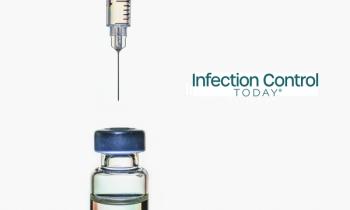
For more than 80 years, the humble chicken egg has quietly powered one of modern medicine’s most vital defenses: vaccines. Even in an age of recombinant DNA, mRNA platforms, and cell-based innovations, more than 80% of the world’s influenza vaccines still begin in an egg. The process is time-tested, affordable, and reliable—but also imperfect. read this to learn more.

Much is discussed about stethoscopes, the "third arm" of clinicians, but what about the risk of spreading health care-associated infections?

With hospitals across the country accelerating investments in automation, why does human competence remain vital?

Dental and oral surgery clinics are often overlooked in infection prevention programs, yet lapses can have serious consequences. Strengthening surveillance, sterilization, and patient safety practices is critical to reducing surgical site infections.

Two unsettling zoonotic developments are testing the limits of infection prevention and public health vigilance in the US. In Washington State, a resident has tested preliminarily positive for avian influenza, marking the first human case in 9 months. Meanwhile, in New Jersey, researchers have documented the nation’s first fatality linked to alpha-gal syndrome, which is a tick-borne meat allergy caused by the bite of the lone star tick.

